Orvis is backing the launch of its next-generation Helios fly rod with some confident claims. But, judging by the initial information the Vermont-based rodmaker is sharing with the launch of its latest U.S.-made flagship rod series, along with our initial impressions of the new Helios’ performance on the water, those claims may not be mere marketing bluster.
Officially available today, February 7, from the legacy manufacturer, the fourth-generation version of the Helios is assuredly billed as the most accurate fly rod ever crafted. Big words, indeed.
“The new Helios is a reimagining of what’s possible in a fly rod and its ability to deliver the best experience for an angler. Four times more accurate than the industry-benchmark H3 is not hyperbole,” said Shawn Combs, Orvis’ director of fishing design and development.
“We’ve built the tools to quantify what’s been measured historically in our industry through feel,” Combs continued. “This rod is where instinct and innovation meet. The result is the most accurate rod in the world. We know it when we cast it, and we see it in the data.”
According to Orvis, the new Helios boasts a significant increase in hoop strength, all while featuring a swing weight that's 10% less than its predecessor, the H3. The company also claims the new Helios is 25 percent stronger than the H3, a big claim given the fanfare assigned to the H3 when it was released in 2017.
Most accurate rod … ever?
But the big claim — the most accurate rod ever built — is what will raise eyebrows. “Accuracy is so important on the water, when you’re trying to hit the target. “Whether it’s sipping trout, whether it’s a fleeing tarpon shot or tailing redfish, accuracy makes the difference in a day,” Combs said.
And, to effectively measure just how accurate the new Helios is, the company didn’t just build a new rod and put it in the hands of experienced anglers. It developed testing equipment that measures the rod’s tracking — a unique set of instruments which Orvis demonstrated for Hatch Magazine and a number of other media outlets this past summer at the company’s Manchester, VT rod shop.

“We’re not asking casters, ‘Is it more accurate?’” Combs said. “We’re measuring whether it’s more accurate.”
In addition to measuring accuracy, the company’s proprietary equipment measures rod recovery.
“It’s going to completely change the game,” he said.
Achieving durability
Durability matters, Combs says. And that’s why Orvis worked its way through every piece of material used to build the rod and tested everything.
The company says it “analyzed decades of rod-building data and taper strategy” to build a rod that bends but rarely breaks. The durability is evident, Orvis says, when an angler feels the Helios’ supreme lifting power when, say, trophy tarpon dives under the boat or a 40–inch pike tries to wrap fly line around the motor.
Two versions
In keeping with recent iterations of the Helios series, the new Helios is available in two actions — “distance” and “finesse.”
The “D” series is a fast rod that delivers line speed and lifting power for anglers looking to throw longer lines and battle bigger fish. It comes in weights 4 through 14. The “F” series is a bit slower and, Orvis claims, “features increased sensitivity optimized for delicate presentations and tippet protection.” The finesse version comes in weights 2 through 8. Both rods, Orvis says, are spot-on accurate when they’re put to the test on the water.

Just the tip
The secret behind the company’s accuracy claims? A significant reduction in tip displacement, says Orvis.
“The new Helios displays dramatically increased hoop strength and minimized vibration along the blank, leading to a radical reduction of tip displacement,” Orvis’ tech bulletin on the new rod reports. “The result is a precise, smooth energy transfer from your hand to the fly and laser-like precision.”
It sure sounds great. And, according to Orvis President Simon Perkins, the rod will meet the lofty expectations the company is setting for it.
“We had something really special with the Helios 3, and we wanted to challenge ourselves with something better,” Perkins said. “Because the team in our Rod Shop is the best in the world, the result is revolutionary.”
Tested by the best
There’s no doubt Orvis did its due diligence with the fourth-generation Helios. That it went seven years between iterations means that the company likely invested significant R&D time and capital into this latest version. It also enlisted some of the world’s best-known anglers to test both versions of the rod in a variety of environments.
“The rod is very powerful and strong for such a light rod,” said globetrotting angler and rod-tester of the “D” version of the new Helios, Jako Lucas. “I pulled on some big tarpon, striped marlin, giant trevally, grouper, snapper, and it performed great. In some cases, I tried to break it and did not.”
“I was able to adjust the cast to let me make a softer back cast to keep the line above the grass, then tighten it up on the forward cast in a creek that is only about five feet wide, said Tuck Scott, who tested the “F” version of the Helios. “The intuitive nature of this rod is almost supernatural.”

Homage to legacy
For a company that’s spent more than a century and a half building generational goodwill among fly fishers and outdoors enthusiasts, you’d think it might shy away from the boldest of the bold claims it makes about the new Helios.
But no. The confidence in the new Helios is evident at the top of the corporate food chain.
“It’s fun to think of Orvis as a start-up in the 1850s and how Charles F. Orvis wanted to give someone the tool that would introduce them to the natural world in a way that would change their life,” Perkins said. “That’s really what this new generation of Helios does. It makes any angler their best. And when you’re your best, you want to get out and live for more unforgettable moments on the water.”
The new Helios retails at $1,098 for freshwater versions, and $1,198 for saltwater rods.





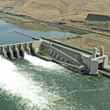




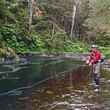
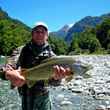


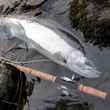
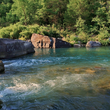



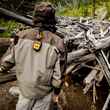
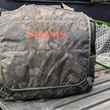








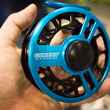

Comments
Jack Donachy replied on Permalink
Informative. Thanks for publishing this, Chris.
JD
Vasili replied on Permalink
The science here is misleading. Accuracy of where the fly lands is important, not how far off axis the tip oscillates. Looking at the first competitor, their tip seems to stay closer to the center line. Does that mean they are more accurate? Who knows. Show testing of a fly hitting the same target more accurately, then you can make the claim. The statement made by Orvis would be more accurate if they said "our rod tip oscillates the least"
Glenn Dotter replied on Permalink
Accuracy is the job of the caster. Marketing is what you do to convince someone that they cant put a fly on target unless they spend $1000-1200 for a rod. I'm not knocking Orvis. Just saying the average flyfisher should focus on their casting skills and not how much they spend on rods and reels. I've bet casting flyrods for 64 years, and I still use my IM6 rods I built years ago. I even fish my fathers Bamboo that is around 80to 90 years old. My newest rod is a $600 rod. My wife got it as a gift. It is very nice and yet my older rods are as accurate as it is because I know how to make them do what I want. A poor caster with "the most accurate rod" will wonder how they wasted so much money. As with shooting, it is the shooter that defines accuracy. Yes the gun is a factor, but a poor shooter as with an average caster. Will not be significantly better with a super expensive tool.
Phil replied on Permalink
Where are the target grain weight numbers for Orvis rods to match the grain weight of the heads (30 feet) of fly lines I already have? Most of your competitors list them now. I no longer want to over line fast fly rods to suit my casting style for the distance sweet spots within my casting ability on the ocean and flats. Fly lines are very expensive!
Frank Sargent replied on Permalink
I understand the need to placate one's sponsors but this reads like a lot of sycophantic B.S. The other commenters are spot on and as a former fishing manager with Orvis I would like to see the company invest in their supply chains in such a way as to limit the waste that proliferates within their business model. I personally threw away thousands of plastic bags (if not tens of) or items that were mildly tarnished because the current business paradigm says those things cannot be donated. If the weight of plastic is going to exceed the weight of fish in the ocean by 2050, I'd like to suggest Orvis try and "over-engineer" a solution to their part of that problem. End the green-washing. Chasing the answer to a problem best left to the efforts of the angler is a tiger chasing it's tail.
Pages